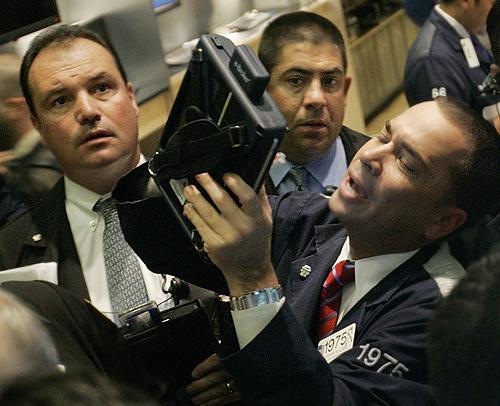Federal Reserve cuts rates to prevent U.S. recession

September 18, 2007
WASHINGTON – It took more than four years, but borrowers finally got some interest rate relief.
In a bold strike, the Federal Reserve slashed a key interest rate by a half percentage point on Tuesday and left the door open to further rate cuts to prevent a painful housing slump and jarring credit crunch from driving the country into recession.
Wall Street responded enthusiastically, propelling stocks up 335.97 points – its biggest one-day point jump in nearly five years. Politicians, shaken by record-high home foreclosures, also welcomed the move.
In a crucial and anxiously awaited decision, Federal Reserve Chairman Ben Bernanke and his central bank colleagues lowered an important interest rate to 4.75 percent. Economic and political pressure has been building on the Fed to act.
As a result, commercial banks’ prime lending rate charged to millions of borrowers dropped by a corresponding amount to 7.75 percent.
Get The Daily Illini in your inbox!
Whether Bernanke can handle the crisis is the biggest challenge he has faced in his 19 months at the Fed helm.
“Today’s action is intended to help forestall some of the adverse effects on the broader economy that might otherwise arise from the disruptions in financial markets and to promote moderate growth over time,” the Fed said in a statement released after its closed-door meeting.
The last time the Fed cut rates was in late June 2003.
Its action means borrowers who can obtain credit should see rates drop on a variety of loans. It will become less expensive for people to finance certain credit card debt and for homeowners to take out popular home equity lines of credit, which often are used to pay for education, home improvements or medical bills.
It also will help some homeowners whose adjustable rate mortgages reset in the fall. Those rates will still go up but not by as much as they otherwise could have, analysts said.
Less immediate will be relief for the country’s economic health. The rate reduction could take three to nine months to ripple through the economy and bolster overall activity.
The aggressive action underscored the Fed’s resolve.
“The Fed has rolled out the heavy artillery here. Bernanke is not being timid,” said Brian Bethune, economist at Global Insight. “The Fed has seen the problems. It is not trying to put out a forest fire with a bucket of water,” he said.
Bethune and some other analysts predict the Fed will lower rates again – probably by a more modest one-quarter percentage point – at its next meeting in October.






